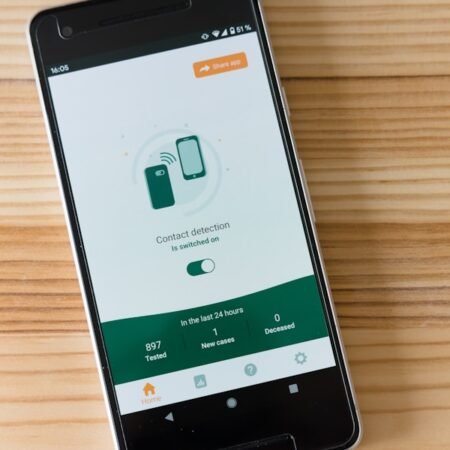In today’s digital age, children are growing up surrounded by technology. While this can be a cause for concern for some parents, there are many benefits to introducing children to technology at a young age. One such piece of technology that has been gaining popularity among parents is the LCD writing tablet. These tablets offer a modern alternative to traditional paper and crayons, providing children with a new way to express their creativity and learn.
One of the main benefits of LCD writing tablets for children is the ability to promote creativity and learning. These tablets allow children to draw, write, and doodle to their heart’s content, without the mess of traditional art supplies. This can be especially beneficial for children who may be hesitant to express themselves through art due to the fear of making a mess. Additionally, the pressure-sensitive screens of these tablets mimic the feeling of writing or drawing on paper, providing a familiar and comfortable experience for children. This can help to encourage creativity and self-expression in a way that traditional art supplies may not.
Key Takeaways
- LCD writing tablets reduce clutter and mess by eliminating the need for paper and crayons.
- These tablets promote creativity and learning in children by providing a reusable canvas for drawing and writing.
- Organize your child’s art with ease using LCD writing tablets, as they allow for easy saving and sharing of creations.
- Switching to LCD writing tablets has a positive environmental impact by reducing paper waste.
- When choosing an LCD writing tablet for your child, consider factors such as size, durability, and additional features.
How LCD Writing Tablets Promote Creativity and Learning
Furthermore, LCD writing tablets can also promote learning in children. Many of these tablets come with features such as tracing templates and educational games, which can help children develop their fine motor skills and hand-eye coordination. Additionally, the ability to easily erase and start over on these tablets can help children feel more confident in their abilities, as they are not limited by the permanence of traditional art supplies. This can encourage them to experiment and take risks in their learning, ultimately leading to greater growth and development.
Another benefit of LCD writing tablets is the ability to save and share children’s creations. Many of these tablets come with the ability to save drawings and notes, allowing children to revisit their work at a later time. This can be a great way for children to track their progress and see how their skills have improved over time. Additionally, the ability to easily share their creations with family and friends can help children feel proud of their work and encourage them to continue exploring their creativity.
Say Goodbye to Clutter: Organizing Your Child’s Art with LCD Writing Tablets
One of the biggest challenges for parents of young children is managing the constant influx of artwork and drawings. Traditional paper and crayons can quickly lead to clutter, as children produce countless pieces of art on a daily basis. However, with the use of LCD writing tablets, parents can say goodbye to the mess and clutter that often comes with traditional art supplies. These tablets provide a digital space for children to create and explore, without the need for endless stacks of paper and boxes of crayons.
In addition to reducing clutter, LCD writing tablets also offer a more organized way to store and display children’s art. Many of these tablets come with the ability to save and organize drawings, making it easy for parents to keep track of their child’s creations. This can be especially helpful for parents who want to preserve their child’s artwork but may not have the space to store physical copies. Additionally, the ability to easily share these digital creations with family and friends can help parents feel more connected and involved in their child’s artistic endeavors.
The Environmental Impact of Switching to LCD Writing Tablets
| Benefits of LCD Writing Tablet for Kids | Details |
|---|---|
| Portability | Lightweight and easy to carry around |
| Environmentally friendly | Reduces paper and crayon waste |
| Creativity | Allows kids to express their creativity without the mess |
| Learning tool | Can be used for practicing writing, drawing, and learning activities |
| Long-lasting | Can be used repeatedly without the need for replacement |
Another important benefit of LCD writing tablets is the positive impact they can have on the environment. Traditional art supplies such as paper and crayons contribute to a significant amount of waste, as children often go through these materials at a rapid pace. By switching to LCD writing tablets, parents can help reduce the amount of paper and other art supplies that end up in landfills. Additionally, many of these tablets are rechargeable, eliminating the need for disposable batteries that can harm the environment.
Furthermore, the use of LCD writing tablets can also help teach children about the importance of sustainability and environmental conservation. By using digital tools for their creative endeavors, children can learn about the impact that their actions have on the planet. This can help instill a sense of responsibility and mindfulness in children from a young age, ultimately leading to a more environmentally conscious generation.
Choosing the Right LCD Writing Tablet for Your Child
When it comes to choosing an LCD writing tablet for your child, there are a few factors to consider. First and foremost, it’s important to look for a tablet that is durable and designed with children in mind. Many tablets come with protective cases and shatterproof screens, which can help prevent damage from accidental drops or rough handling. Additionally, it’s important to consider the size of the tablet and whether it will be comfortable for your child to use.
Another important factor to consider is the features that come with the tablet. Some tablets come with additional tools such as stylus pens or tracing templates, which can enhance your child’s creative experience. It’s also worth considering whether the tablet has the ability to save and organize drawings, as this can be a helpful feature for both children and parents. Finally, it’s important to consider the battery life and charging options for the tablet, as this will impact how often it needs to be recharged.
Incorporating LCD Writing Tablets into Your Child’s Daily Routine
Once you’ve chosen the right LCD writing tablet for your child, it’s important to find ways to incorporate it into their daily routine. One way to do this is by setting aside dedicated time each day for your child to use the tablet for creative activities. This can help establish a routine and make using the tablet feel like a regular part of their day.
Additionally, you can encourage your child to use the tablet for educational activities such as practicing writing or drawing shapes and letters. Many tablets come with educational games and activities that can help reinforce learning in a fun and interactive way. By incorporating these activities into your child’s daily routine, you can help them develop important skills while also enjoying the benefits of using an LCD writing tablet.
Tips for Maximizing the Benefits of LCD Writing Tablets for Kids
Finally, there are a few tips for maximizing the benefits of LCD writing tablets for kids. One tip is to encourage your child to experiment with different drawing and writing tools on the tablet. Many tablets come with different pen options and colors, which can help children explore their creativity in new ways.
Another tip is to use the tablet as a tool for practicing writing and drawing skills. You can encourage your child to use the tablet for activities such as tracing letters or drawing shapes, which can help them develop important fine motor skills. Additionally, you can use the tablet as a way to practice spelling and handwriting, providing a fun and interactive way for your child to improve their literacy skills.
In conclusion, LCD writing tablets offer a modern and innovative way for children to express their creativity and learn. These tablets provide numerous benefits, from promoting creativity and learning to reducing clutter and environmental impact. By choosing the right tablet for your child and incorporating it into their daily routine, you can help them maximize the benefits of this exciting technology. Whether used for artistic expression or educational activities, LCD writing tablets have the potential to enhance your child’s development in countless ways.
FAQs
What is an LCD writing tablet?
An LCD writing tablet is a device that allows users to write or draw on a screen using a stylus or their fingers. The screen is pressure-sensitive and can be erased with the touch of a button, making it a reusable and eco-friendly alternative to paper and crayons.
How does an LCD writing tablet benefit kids?
An LCD writing tablet provides a mess-free and portable way for kids to express their creativity and practice writing and drawing skills. It can also help reduce paper waste and clutter in the home.
What are the features of an LCD writing tablet?
Features of an LCD writing tablet may include a pressure-sensitive screen, lightweight and durable construction, a stylus or pen for writing and drawing, and a one-touch erase button. Some models may also have additional features such as color options and the ability to save and export drawings.
Are LCD writing tablets safe for kids to use?
LCD writing tablets are generally safe for kids to use, as they do not involve any harmful chemicals or materials. However, it is important for parents to supervise young children while using the device to ensure they do not misuse the stylus or put the tablet in their mouths.
Can an LCD writing tablet replace traditional paper and crayons?
While an LCD writing tablet can be a convenient and eco-friendly alternative to traditional paper and crayons, it may not completely replace these materials in all situations. However, it can significantly reduce the need for paper and crayons in everyday activities such as drawing, writing, and practicing math problems.





























